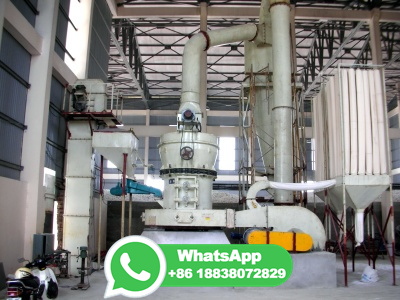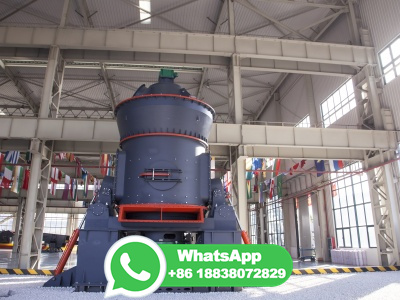
Indirect liquefaction processes require first gasifying the solid feedstocks into a syngas. Therefore, while direct coal liquefaction (DCL) takes coal directly into a liquid phase, indirect coal liquefaction (ICL) consists of two major steps: (a) gasification to produce a synthesis gas (syngas); and (b) conversion of the carbon monoxide (CO) and hydrogen (H 2) in the syngas to a range of ...
WhatsApp: +86 18037808511
Coal liquefaction is a process of changing coal into liquid hydrocarbons: liquid fuels and petrochemicals. This process is often known as "Coal to X" or "Carbon to X", where X can be many different hydrocarbonbased products. However, the most common process chain is "Coal to Liquid Fuels" (CTL)
WhatsApp: +86 18037808511
Direct coal liquefaction can directly transform solid coal into highend oil products with a conversion efficiency of nearly 60 %, but still emit a certain amount of CO 2 during the oil production process. The carbon neutrality target places an urgent demand on its low/zerocarbon emissions and technology transformation.
WhatsApp: +86 18037808511
CoProcessing refers to the combined processing of coal and petroleumderived heavy oil feedstocks. The coal feedstocks used are those typically utilized in direct coal liquefaction: bituminous, subbituminous, and lignites. Petroleumderived oil, is typically a petroleum residuum, containing at least 70 W% material boiling above 525{degrees}C.
WhatsApp: +86 18037808511
Based on the liquefaction process, the global coal to liquid (CTL) market is segmented into direct coal liquefaction and indirect coal liquefaction. Indirect coal liquefaction is the most widely used liquefaction technology. This process produces highvalue and cleanburning fuels. Synthetic fuel produced using this technology can be used in ...
WhatsApp: +86 18037808511
the process to dissolve the coal and to transfer externally produced hydrogen to the coal molecules. Catalytic liquefaction resembles solvent extraction, except that hydrogen is added to the coal with the aid of a catalyst. Figure presents the flow diagram of a typical solvent extraction or catalytic liquefaction plant. These coal ...
WhatsApp: +86 18037808511
the process to dissolve the coal and to transfer externally produced hydrogen to the coal molecules. Catalytic liquefaction resembles solvent extraction, except that hydrogen is added to the coal with the aid of a catalyst. Figure presents the flow diagram of a typical solvent extraction or catalytic liquefaction plant. These coal ...
WhatsApp: +86 18037808511
The direct coal liquefaction process usually produces a liquefaction residue of about 30% of its coal feed. The effective utilization of the coal liquefaction residue (CLR), which contains about ...
WhatsApp: +86 18037808511
Coal liquefaction is the conversion of coal to a cleanburning, lowsulfercontent fuel which can augment gasoline and boiler fuels. Direct liquefaction processes are currently in the research and development stage and are expected to yield a high percentage of boiler fuels for industry and utilities. Indirect liquefaction processes are ...
WhatsApp: +86 18037808511
The first commercially available liquefaction process was the Bergius process, developed in Germany as early as 1911 but brought to commercial scale during World War I. This involves mixing coal in an oil recycled from a previous liquefaction run and then reacting the mixture with hydrogen under high pressures ranging from 200 to 700 atmospheres.
WhatsApp: +86 18037808511
Liquefaction. In materials science, liquefaction [1] is a process that generates a liquid from a solid or a gas [2] or that generates a nonliquid phase which behaves in accordance with fluid dynamics. [3] It occurs both naturally and artificially. As an example of the latter, a "major commercial application of liquefaction is the liquefaction ...
WhatsApp: +86 18037808511
CCLP Chevron Coal Liquefaction Process CCS Carbon capture and storage CO Carbon monoxide CO 2 Carbon dioxide CPI OPECConsumer Price Index CTL Coaltoliquids DCL Direct coal liquefaction DME Dimethyl ether DOD Department of Defense DOE Department of Energy EDS Exxon Donor Solvent ...
WhatsApp: +86 18037808511
Direct coal liquefaction involves contacting coal directly with a catalyst at elevated temperatures and pressures with added hydrogen (H 2 ), in the presence of a solvent to form a raw liquid product which is further refined into product liquid fuels.
WhatsApp: +86 18037808511
Since the late 1970s, coal liquefaction processes have been developed into integrated twostage processes, in which coal is liquefied in the presence of hydrogen in the first stage and the products are upgraded in the second stage.
WhatsApp: +86 18037808511
Coal liquefaction is a process of converting coal into liquid hydrocarbons: liquid fuels and petrochemicals. This process is often known as "Coal to X" or "Carbon to X", where X can be many different hydrocarbonbased products. However, the most common process chain is "Coal to Liquid Fuels" (CTL).
WhatsApp: +86 18037808511
You have not visited any articles yet, Please visit some articles to see contents here.
WhatsApp: +86 18037808511
Indirect liquefaction requires an intermediate gasification of the solid coal to form a synthesis gas, which is then converted to the liquid product. This process results in the complete dismantling of the coal structure. direct liquefaction, coal is exposed directly to hydrogen at high temperatures (450C) and high pressures (kPa ...
WhatsApp: +86 18037808511
catalysis liquid fuels lignin conversion Introduction Fuels are needed to power electricity and transportation, in the US and the rest of the world. Currently, the bulk of the power and transportation fuels rely on petroleum, coal and natural gas, with some contributions from hydroelectric, nuclear power, biomass and other alternatives.
WhatsApp: +86 18037808511
The effective utilization of the coal liquefaction residue (CLR), which contains about 80% organic matter, is of great significancefor improving the oil yield of the direct liquefaction process ...
WhatsApp: +86 18037808511
Abstract The effect of process conditions on the coprocessing technology of crude oil and coal was investigated. Crude oil/coal matching performance, swelling degree, crude oil/coal slurry viscositytemperature characteristics and process parameters were obtained via the laboratory scale and pilot scale studies. The optimum reaction temperature of the coprocessing was 445~450 oC, the ...
WhatsApp: +86 18037808511
Petroleum gas production. For producing petroleum gas, the optimal advanced oil processing ratio is 20:5:17 (advanced oil processing : heavy oil cracking : light oil cracking), and 8:2:7 is close enough. Using coal liquefaction, the ratio is 60:39:55 (coal liquefaction : heavy oil cracking : light oil cracking), and 12:8:11 is close enough.
WhatsApp: +86 18037808511
A typical liquefaction process, NEDOL process, applied 728 K, 17 MPa, a metal catalyst, and a hydrogen supplier solvent for the coal depolymerization. A significant problem of coal liquefaction is that the conditions are too severe, so the cost of the heat energy and plant device is too high to be commercialized.
WhatsApp: +86 18037808511![PHUL]DWLRQ%DVHGRQ%LJ'DWD IOPscience](/8qejb7r/397.jpg)
The liquefaction of coal is one of the main ways to realize the clean and efficient utilization of coal. The industrial application process of preparing clean fuels or chemical products from coal mainly includes three methods: direct coal liquefaction, indirect liquefaction and coal pyrolysis. Direct coal liquefaction, in simple terms, is a ...
WhatsApp: +86 18037808511
Coal liquefaction is very powerful if you choose to make plastic onsite. With traditional oil processing, you need both oil and coal close to water, while liquefaction allows you to forget the oil and use only the coal and water instead. This gives you way more flexibility, since coal near water is much more frequent than coal, oil and water being close together.
WhatsApp: +86 18037808511
Direct coal liquefaction (DCL) The conversion of coal to liquids via dissolution and/or hydroprocessing, without first gasifying the coal DOE United States Department of Energy FischerTropsch reaction The catalytic conversion of synthesis gas to primarily hydrocarbons, the discovery being credited to Franz Fischer and Hans Tropsch
WhatsApp: +86 18037808511